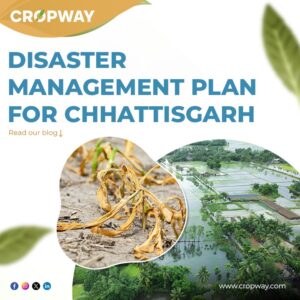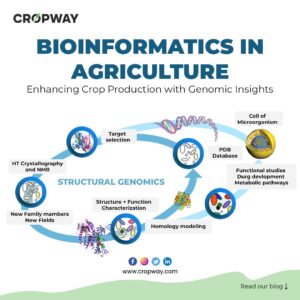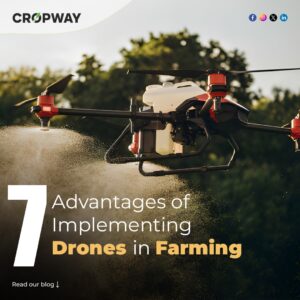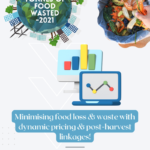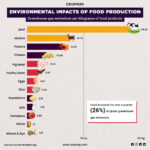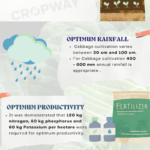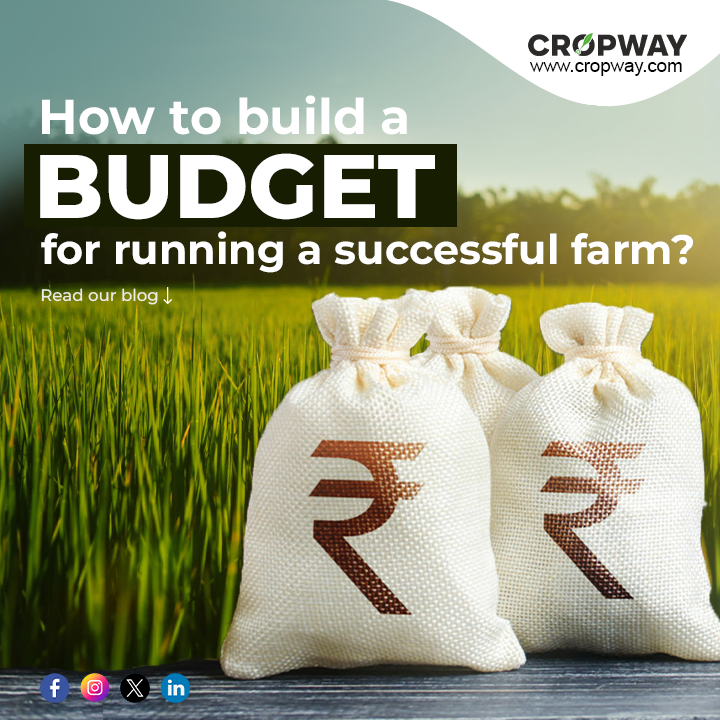
Continually addressing the optimal organization and management of a farm business aligned with the family’s objectives is essential. The responsibility of evaluating alternatives and their consistency with established goals lies with the farmer and the farm family acting as managers, especially in the absence of external management. Exploring the utility of budgeting as a management tool, this blog aims to demonstrate its potential to address various queries related to combining inputs, resource allocation, and product selection within farming operations.
Role of Budgeting in Agricultural Management:
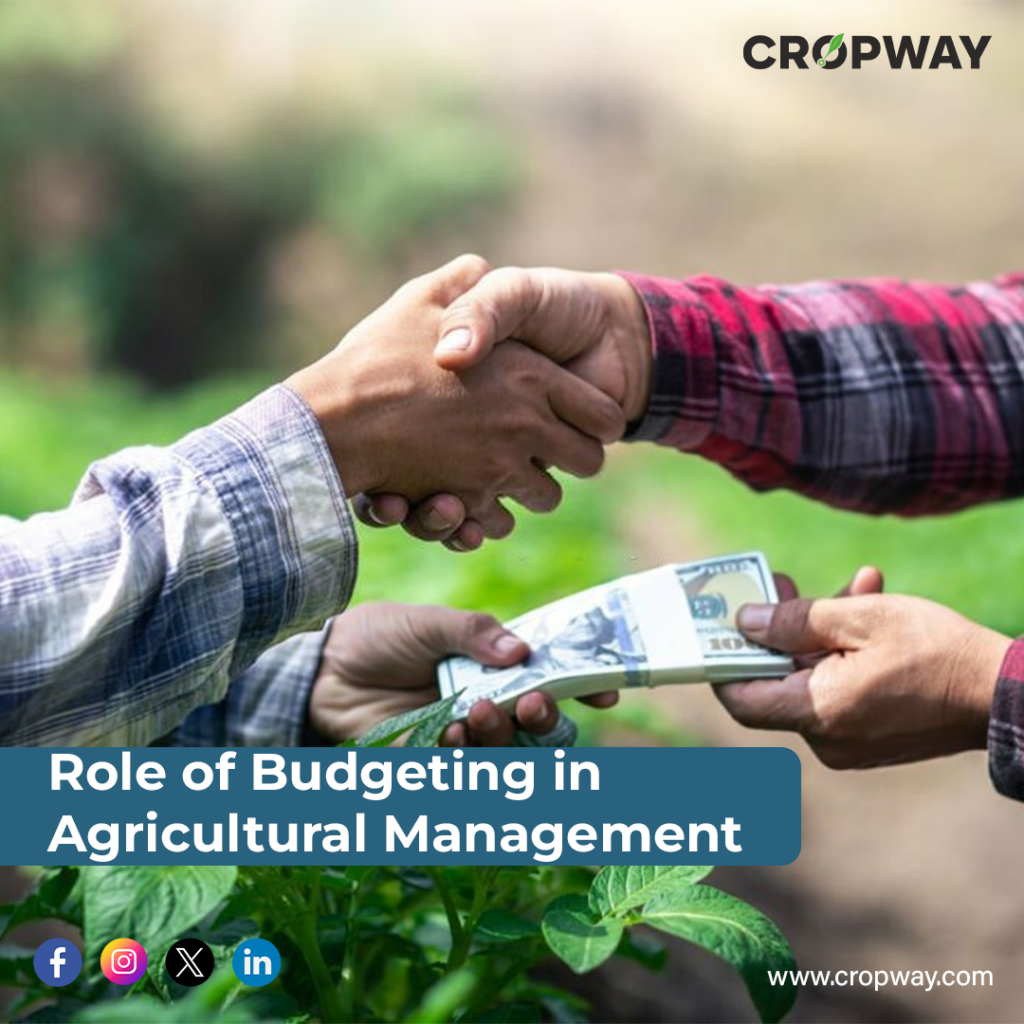
In the realm of farm management, budgeting emerges as a fundamental tool, offering a comprehensive outlook on the physical and financial aspects of a farm plan or its potential alterations within a specific timeframe. In essence, farm budgeting serves as a strategic approach, meticulously analyzing and evaluating the utilization of agricultural resources within the purview of decision-making. Through detailed assessments, it empowers farmers to navigate their plans effectively, ensuring optimal resource allocation and informed decision-making in agricultural pursuits.
Types of Farm Budgeting:
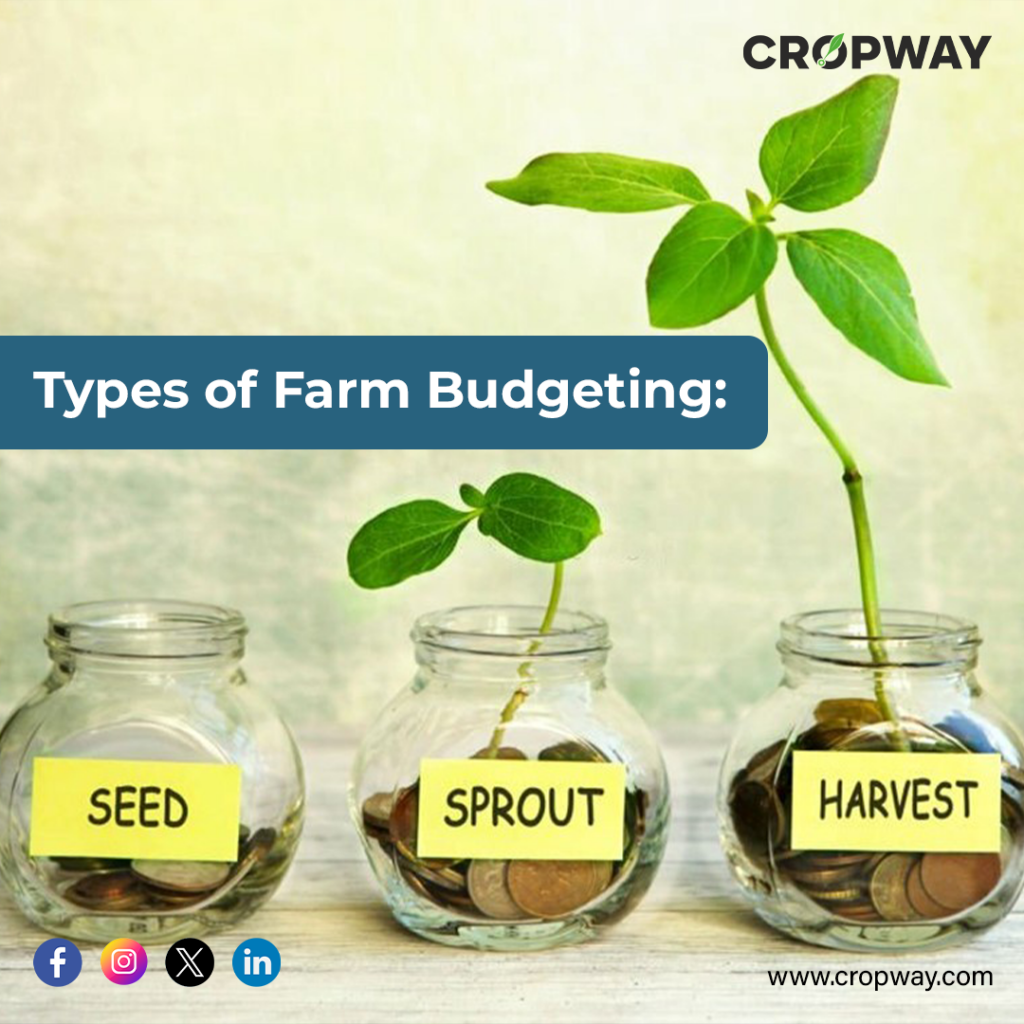
Within farm business management, four key budget types serve vital roles in guiding decision-making processes for farmers. Each variant provides unique insights, empowering managers with valuable information for making informed choices. Despite their differences, all aim to equip farmers with the economic logic necessary to allocate resources effectively, aligning with the established goals and objectives of their farm.
The different types of farm budgeting techniques are:
a) Partial Budgeting b) Enterprise Budgeting c) Cash flow Budgeting d) Complete Budgeting
a) Partial Budgeting:
Partial budgeting is a crucial tool used in assessing the potential outcomes of specific farm activities or alterations within the business. It focuses on estimating the impact of proposed changes on the farm’s profitability by analyzing the expected changes in income and expenses. This method includes only the alterations that would directly affect income or expenses, omitting unchanged values.
The partial budgeting method answers four key questions about a proposed change: 1) What new costs will arise? 2) What current income will decrease? 3) What new income will come in? and 4) What current costs will decrease or vanish? It pinpoints factors that might decrease profit, like increased expenses or reduced income, and those that could increase profit, such as additional income or reduced costs. By subtracting total reductions from total increases, it determines the net change in profit. A positive value suggests the proposed changes could boost the farm’s profitability, aiding farmers in decision-making.
Various Modifications Analyzed by Partial Budgeting:
Farm plan modifications suitable for assessment through partial budgeting can be broadly categorized into three types:
- Enterprise Substitution: This refers to either entirely or partially replacing one farm activity with another. For instance, exchanging an acre of paddy cultivation for an acre of sugarcane.
- Input Substitution: Alterations involving replacing one input with another or adjusting the quantity of inputs used are easily evaluated using partial budgeting. For example, substituting machinery for labor.
- Scale of Operation: Changes in the overall size of the farm operation or a specific enterprise fall under this category. For instance, acquiring or leasing additional land or machinery.
Partial budgeting offers a systematic approach to analyze these modifications, enabling farmers to make informed decisions about potential changes in their farming strategies.
Table 1: Introduction of Soybean as an Intercrop in Sugarcane
| Debit (Added Cost) | Amount (₹) | Credit (Added Return) | Amount (₹) |
| Increased cost: | 280.00 | Added Return | 1200.00 |
| Labour | |||
| Seed | 20.00 | Reduced Cost | |
| Sub – Total | 300.00 | Total | 1200.00 |
| 2. Reduced Return | – | ||
| Total | 300.00 | ||
| Net Change in income = Added Return – Added Cost = ₹ 1200 – 300 = ₹ 900 | |||
Despite its utility, partial budgeting has inherent limitations that farmers should consider:
- Incomplete Solution: Implementing partial changes might not always resolve all issues within the farm operation.
- Sensitivity to External Factors: Results derived from partial budgets can fluctuate due to changes in output-input prices, resource availability, and variations resulting from factors like soil type and fertility.
These limitations suggest that while partial budgeting offers valuable insights, farmers should complement it with a comprehensive understanding of external influences to make well-informed decisions for their farming endeavors.
b) Enterprise Budgeting:
Enterprise budgeting focuses on individual crops or livestock within a farm’s activities. It estimates all income and expenses for a specific enterprise, projecting its potential profitability. This budget lays the groundwork for farm planning and helps determine the relative profitability of different activities. It details expected outputs in physical and monetary terms for specific units of activity, like per hectare or per animal. This analysis provides farmers with valuable financial insights into their agricultural operations.
Table 2: Enterprise Budget for Irrigated Maize
| Particulars | Amount(₹) |
| Returns | |
| Main Product | 6277 |
| By Product | 524 |
| Gross return | 6801 |
| Cost | |
| Land Revenue | 21 |
| Seed | 1245 |
| Manures and Fertilizers | 530 |
| Plant Protection chemicals | 98 |
| Irrigation charges | 190 |
| Machine power | 206 |
| Bullock power | 304 |
| Human labour | 1617 |
| Interest on working capital | 128 |
| Depreciation on building and machineries | 125 |
| Interest on Fixed capital | 725 |
| Total Cost | 5189 |
| Net return | 1612 |
c) Cash – Flow Budgeting:
It is essential to know about cash flow statement before using the cash flow budgeting.
1) Cash Flow Statement: It summarizes the magnitude of cash inflows and outflows over a period of time.
2) Importance of cash flow Statement: It helps to assess: i) whether cash would be available in correct quantity at right time; ii) whether the surplus could be profitably diverted and iii) timing and magnitude of borrowings required. The cash flow statement may be constructed over annually, quarterly, monthly and weekly depending upon the nature of business.
i) Cash inflows – It represent the amount of cash received during the particular time period. It includes: a) the beginning cash balance, b) receipts through sales of farm and non-farm assets and c) receipts of short term (operating), intermediate and long term loans.
ii) Cash Outflows – It represents expenses over a period, including cash expenses, loan repayments, and non-farm investments. It reflects cash movement in and out of the farm business. Cash flow statements cover non-farm items like taxes and living expenses, providing a comprehensive view of debt transactions, while income statements focus on interest payments.
3) Cash Flow Budgeting: A cash flow budget is a summary of the cash inflows and outflows for a business over a given time period. As a forward planning tool, its primary purpose is to estimate future borrowing needs and the loan repayment capacity of the business. Cash flow budgeting is to assess the whole farm plan.
Table 3: Simplified Cash-Flow Budget
(Amount in ₹)
| Particulars | Time Period I | Time Period II |
| Beginning Cash balance | 1000 | 1000 |
| Cash inflow | ||
| Farm Produce sales | 2000 | 12000 |
| Capital sales | 0 | 4500 |
| Miscellaneous cash income | 0 | 500 |
| Total Cash inflow | 3000 | 18000 |
| Cash outflow | ||
| Farm operating expenses | 3500 | 1800 |
| Capital Purchases | 10000 | 0 |
| Miscellaneous expenses | 500 | 200 |
| Total cash outflow | 14000 | 2000 |
| Cash Balance(5-9) | 11000 | 16000 |
| Borrowed funds needed | 12000 | 0 |
| Loan repayment (principal and interest) | 0 | 12720 |
| Ending cash balance(10+11-12) | 1000 | 3280 |
| Debt outstanding | 12000 | 0 |
In period I, there’s an inflow of ₹3,000 and outflow of ₹14,000, resulting in an estimated cash deficit of – ₹11,000, demanding a borrowing of ₹12,000 to maintain a minimum ending cash balance of ₹1,000. Period II records an outflow of ₹18,000, leaving a projected cash balance of ₹16,000, sufficient to clear the ₹12,720 debt from period I (including interest). This leads to an anticipated ₹3,280 cash balance at the end of period II. A cash flow budget primarily forecasts new borrowing needs and loan repayment timing, and amounts required throughout the year.
d) Complete or Whole farm budgeting:
It is a method that consolidates and organizes comprehensive farm information to aid resource management decisions. It strives to estimate all costs and returns, offering a holistic view of the farm’s business. Typically, it’s favored by beginners or farmers seeking an entire restructuring of their current farm setup. Complete budgeting and partial budgeting work hand-in-hand; partial budgeting aids in deciding alterations within the farm organization during various stages of complete budgeting.
The process involves assessing existing farm resources and their efficiency, evaluating potential production activities and their resource needs, and analyzing alternative plans for feasibility and profitability. The estimated net farm income is ₹39,750 under ideal prices and yields, subject to change based on fluctuations in these factors when operating the farm under this plan.
Table 4: Complete Budget Showing Projected Income, Expenses and Profit
| Particulars | Amount (Rs) |
| I Income: i) Cotton | 54,000 |
| ii) Paddy | 43,000 |
| iii) Sorghum | 13,500 |
| iv) Dairy products | 40,000 |
| Total income | 150,500 |
| II Variable Expenses: i) Fertilizers | 11,900 |
| ii) Seeds | 3,600 |
| iii) Plant protection chemicals | 7,900 |
| iv) Fuel and oil | 4,050 |
| v) Machine repairs | 2,650 |
| vi) Feed purchase | 1,600 |
| vii) Veterinary expenses and other expenses | 30,100 |
| viii) Custom hire charges | 10,250 |
| ix) Miscellaneous expenses | 2,450 |
| Total variable Expenses | 74,500 |
| III Fixed Expenses: i) Tax | 2,600 |
| ii) Insurance | 1,250 |
| iii) Interest on debt | 22,000 |
| iv) Machinery depreciation | 7,200 |
| v) Building depreciation | 3,200 |
| Total fixed expenses | 36,250 |
| Total expenses | 110,750 |
| Net Farm Income (Rs. 150,750 – 110,750 ) 39,750 | |
1) Functions: i) It serves as a foundation for comparing various plans’ profitability, which proves beneficial when strategizing for farm growth. ii) An intricate whole farm budget illustrating anticipated profits can aid in securing essential operational capital through loans.
Conclusion:
Farmers use different budgeting methods to manage their operations effectively. Complete budgeting involves larger-scale changes in farm organization, considering various alternatives across the entire farm. In contrast, partial budgeting focuses on smaller modifications and compares limited alternatives for specific aspects of the farm. Each method serves different purposes and helps farmers make informed decisions based on their scale of operation and desired changes.
Budgeting in farming is crucial for making informed decisions and ensuring financial success. Various methods like partial, enterprise, cash-flow, and complete budgeting offer unique insights into profitability and resource allocation. Partial budgeting focuses on specific changes’ impact, while enterprise budgeting delves into individual activities’ financial viability. Cash-flow budgeting forecasts borrowing needs and repayment capacity, while complete budgeting gives an overview of the farm’s entire financial landscape.
Each method serves a specific purpose, aiding farmers in making informed decisions aligned with their goals. Ultimately, these tools empower farmers to optimize resources and steer their farms toward sustainable profitability.
You might also want to read :- Exploring the Dynamic Diversity of Tillage Systems

